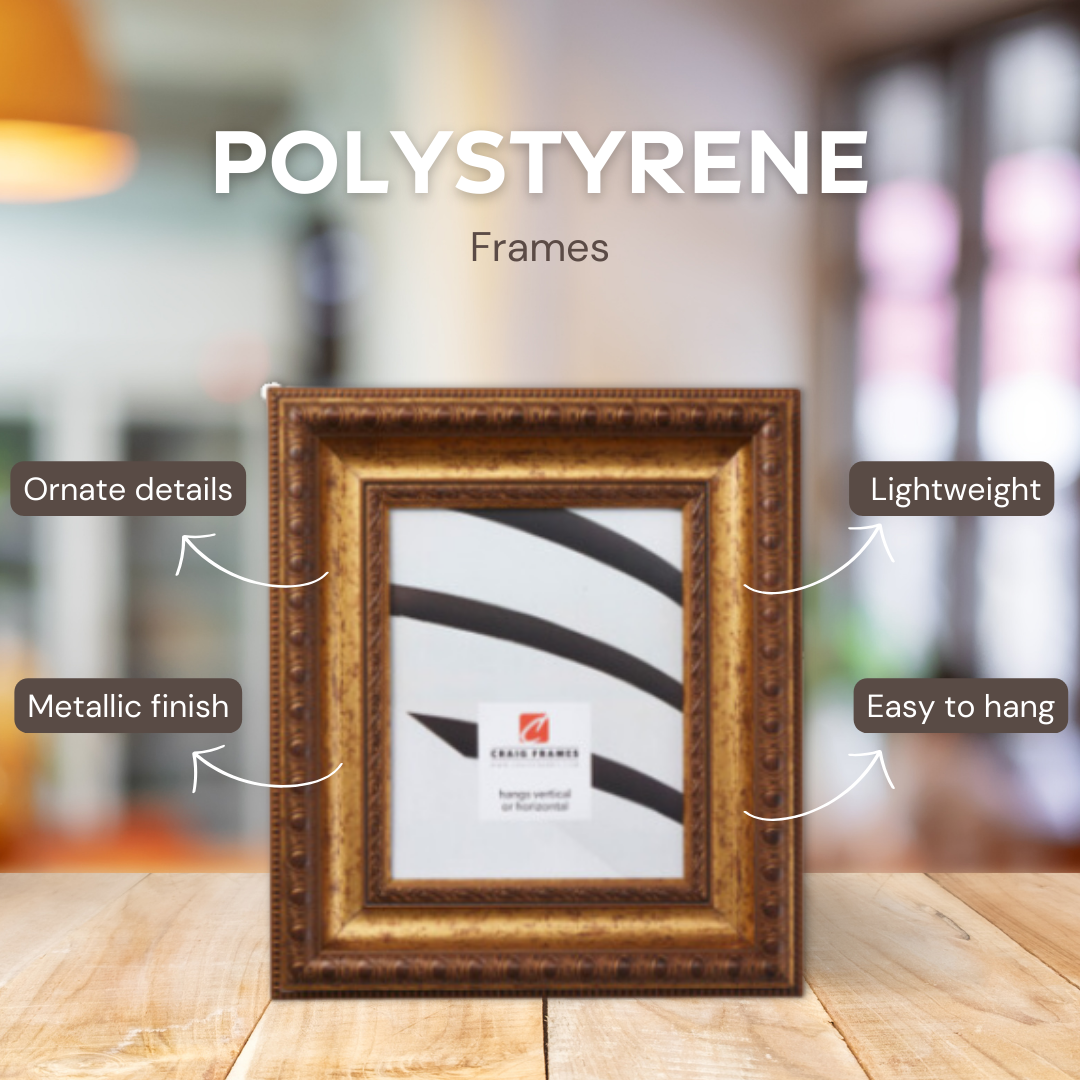Mastering Moulding: Which frame type is the best for your artwork?
Posted by CF Style Team on on Mar 1st 2024
Whether you’re a seasoned art collector, a DIY enthusiast, or simply curious about the art of framing, join us as we unravel the pros and cons of popular picture frame moulding. Moulding refers to the giant “sticks” of solid wood, MDF (Medium-Density Fiberboard), or polystyrene that are cut to size for the arms of a picture frame. In this blog post, we’ll take you behind the scenes, uncovering the characteristics and qualities of each moulding type.
Solid Wood
Noted for its exceptional durability and longevity, solid wood frame moulding stands as the most revered and well-established choice in the world of framing. Crafted from a variety of genuine wood species such as oak, ash, pine, walnut, and more, solid wood frames epitomize the timeless elegance and inherent beauty of natural materials. One of the most captivating features of solid wood mouldings is the unique grain pattern that adorns each frame, bestowing upon it an individuality and character all its own. From the graceful swirls of oak to the rich tones of walnut, the intricate interplay of knots, color variations, and texture lends an air of authenticity and charm to every piece, transforming each frame into a one-of-a-kind masterpiece. Whether it's the rustic allure of knotty pine or the refined sophistication of cherry, the distinct personality of solid wood frames adds depth and dimension to any artwork or photograph they embrace, creating a visual narrative that captivates the senses and stirs the soul.
Pro: Traditional and classic; original and unique grain pattern
Con: Difficult to get two identical frames; humidity may cause warping

MDF (Medium-Density Fiberboard)
Medium-density fiberboard is composed of wood fibers bonded together with adhesive under high pressure and temperature. MDF offers a uniform and smooth surface that serves as an ideal canvas for various finishes and embellishments. Its homogeneous composition eliminates the natural imperfections found in solid wood, providing a consistent backdrop for framing artwork or photographs. MDF mouldings are prized for their affordability and accessibility, making them a popular choice for both professional framers and DIY enthusiasts alike. While lacking the natural charm and individuality of solid wood, MDF frame mouldings compensate with their adaptability, allowing for a wide range of customization options, from sleek modern profiles to intricately detailed designs. Despite being engineered, MDF mouldings boast considerable strength and stability, ensuring that your framed pieces are securely protected and displayed with style. Whether painted, stained, or veneered, MDF frame mouldings offer a cost-effective solution without compromising on quality or aesthetic appeal.
Pro: Consistent appearance and texture; cost-effective
Con: Engineered wood; often covered with a veneer or laminate wrap

Polystyrene
Crafted from a synthetic polymer, polystyrene moulding is renowned for its lightweight composition and cost-effective attributes. This versatile material is particularly well-suited for budget-conscious consumers or extensive framing endeavors. Thanks to its featherlight nature, polystyrene frames are effortlessly manageable and simple to hang, making them an appealing choice for those seeking oversized framing solutions. While it may lack the natural texture inherent in wood, polystyrene can be intricately molded, allowing for the replication of traditional wood grains or metallic finishes with striking fidelity. Furthermore, polystyrene mouldings boast impressive moisture resistance, rendering them a practical and economical choice for environments prone to humidity.
Pro: Moisture-resistant; lightweight; cost-effective
Con: Not ideal for hanging heavy artwork

The choice of frame moulding depends on your preferences, budget, and the specific needs of your display space. Each type of moulding has its own set of pros and cons, but with a variety of styles and material options, you can find the perfect frame to enhance and display your artwork or photography. Whether you opt for the traditional charm of solid wood, the affordability of MDF, or the practicality of polystyrene, mastering the art of moulding selection ensures that your framed pieces shine in every setting.

